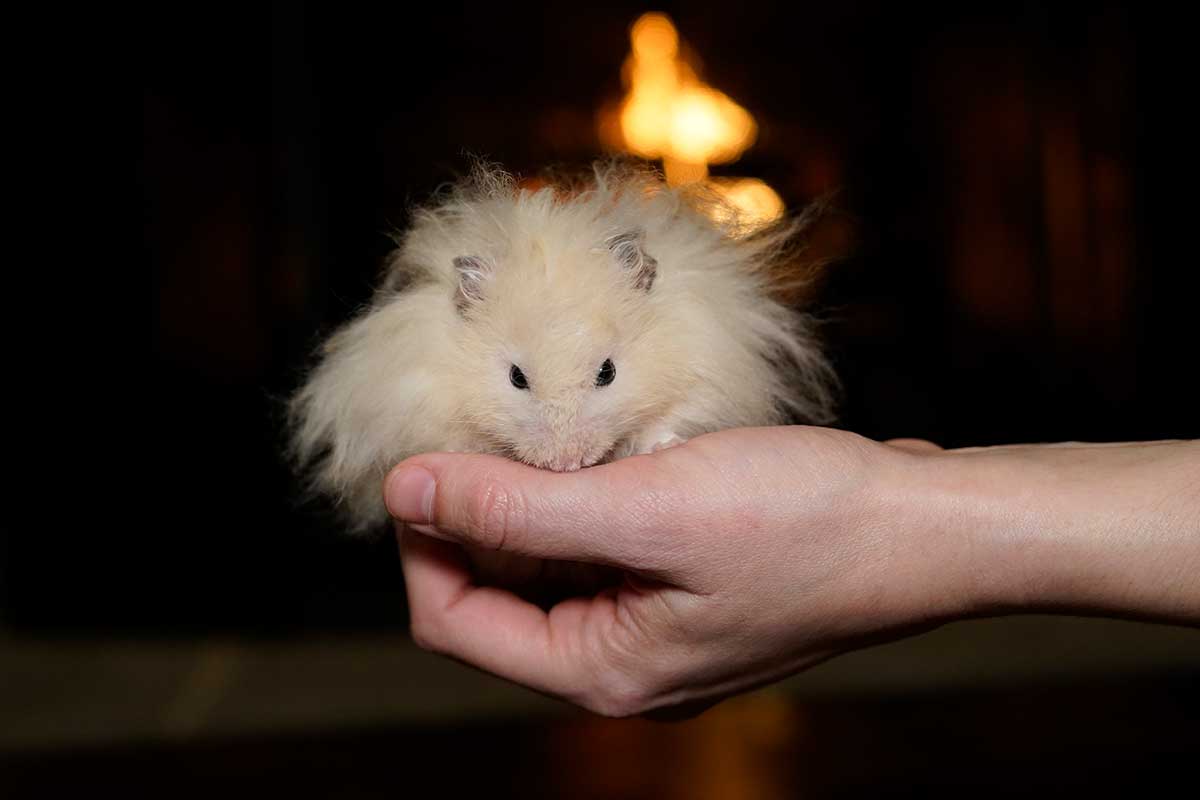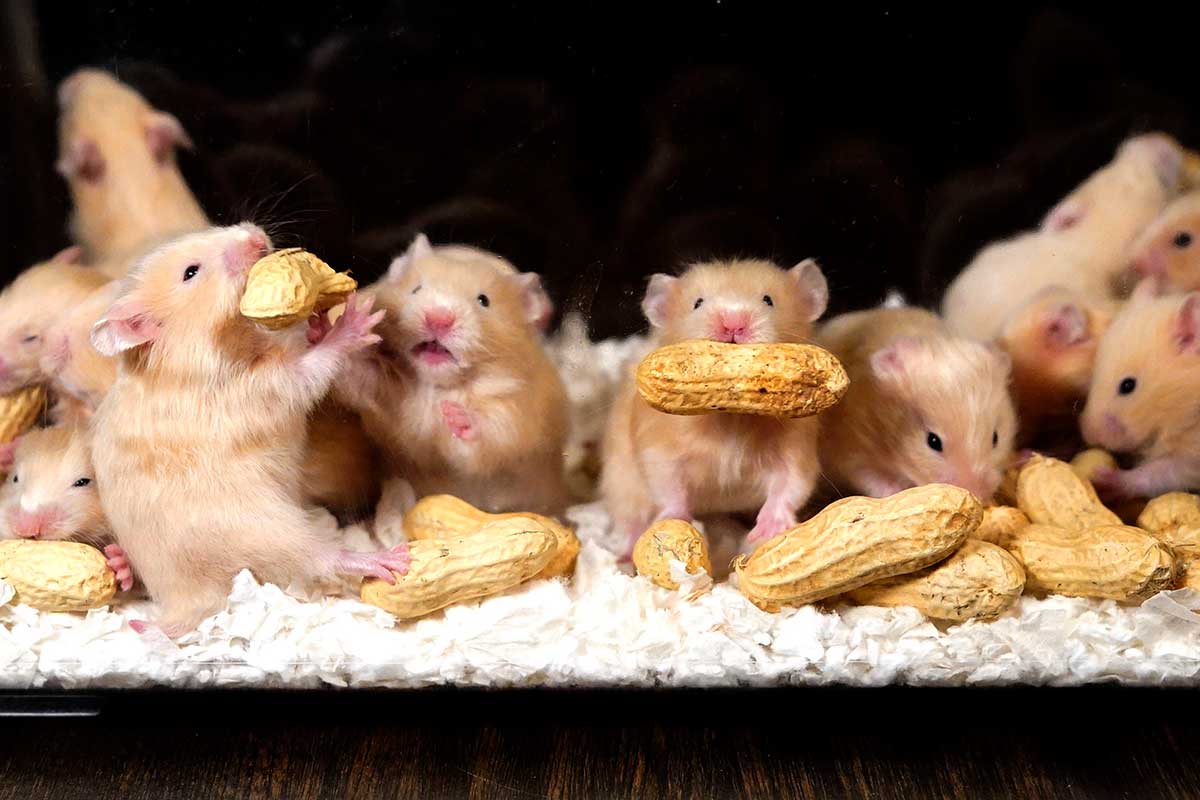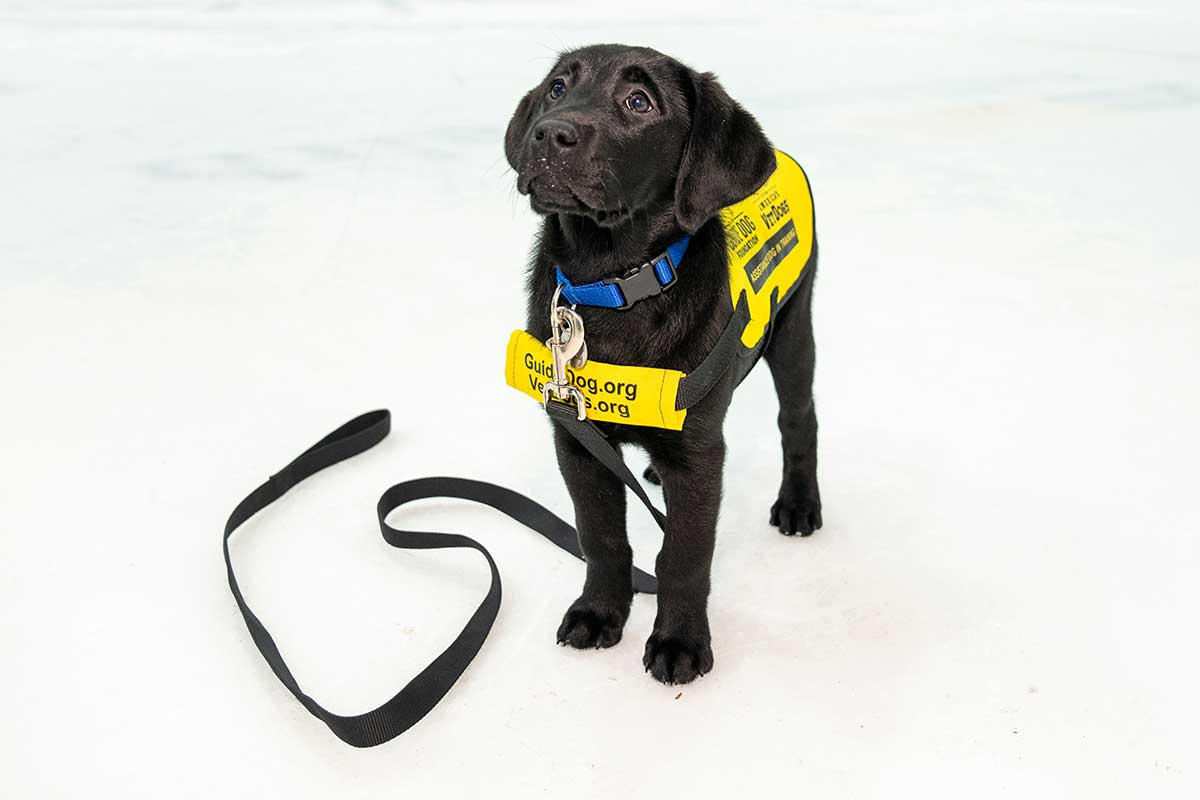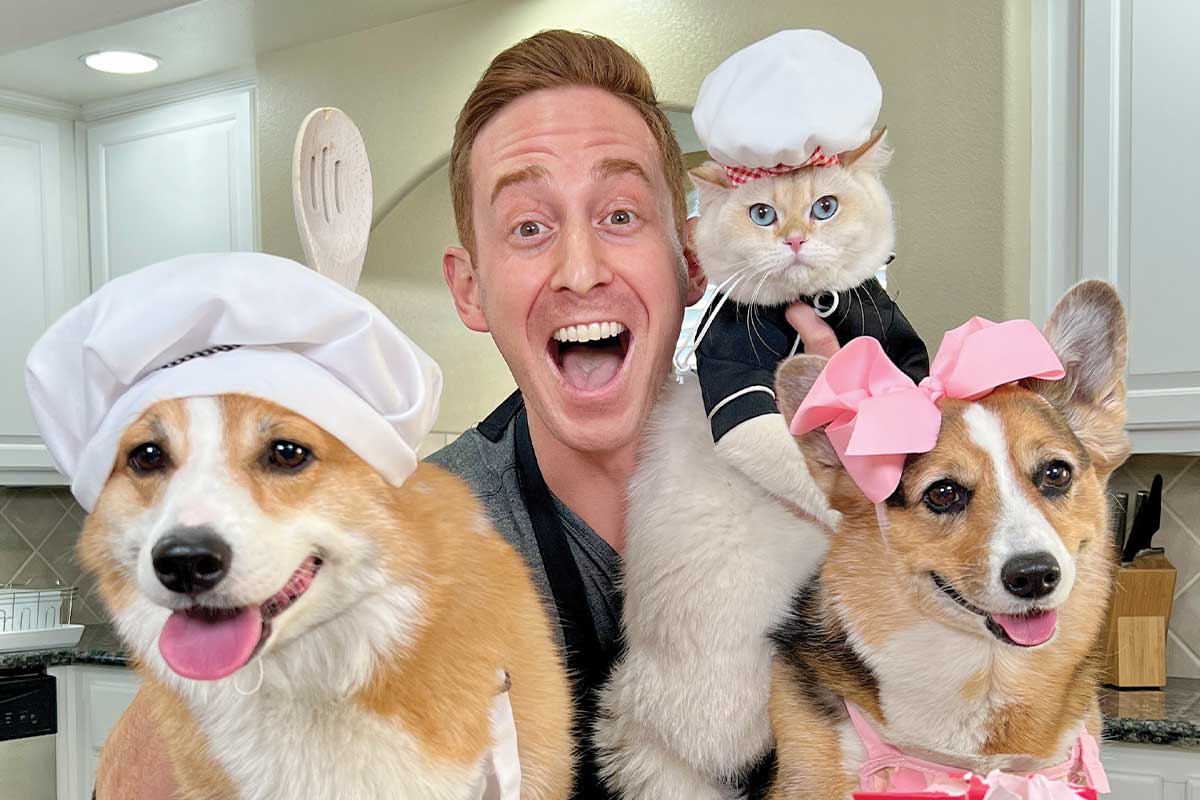A lot of thought went into the gray, rust-colored, brown, and cream Syrian hamsters darting around cages in Jessica Bresler’s Clifton home. As they nibble on raw kale stems or organic carrots, she studies their nose shape, eye color, and temperament, determining their personalities and whether to continue or tweak their gene lines.
Bresler is what’s known as an ethical hamster breeder, which the California Hamster Association (CHA) defines as “someone who breeds hamsters for the right reasons.” Her own definition is more involved: “For me, it means that my priority is focusing on health and temperament and how they are raised,” Bresler says.
For you, it means you won’t find her hamsters in any pet stores. She sells the rodents she breeds through her hamstery: Poppy Bee, which is named after one of her daughters and an insect Bresler loves.
She founded the hamstery in 2018 and breeds Syrian hamsters – as opposed to other species such as dwarf and Roborovski — because they are the biggest domesticated hamster species in North America.
“I think that they are easier to handle, and I like their temperament better than other species of hamsters,” Bresler says.
She started with hamsters she got from an ethical breeder in Harrisonburg, Virginia, and since has acquired others from Portland, Oregon, and even Europe. From the latter, she “got three hamsters that became crucial in our lines in terms of improving how hamsters look and increased genetic diversity, bringing new outcrosses so that we could have healthier and more robust lines,” Bresler says.
A genetic outcrossing means hamsters are not genetically related to one another, although it can be a partial outcrossing, which means they are partially related. All domesticated hamsters in the United States originate from a female hamster that a biologist found in Syria in 1930. “So, the reality is that Syrian hamsters are really inbred,” Bresler says, “but rodents in general can tolerate a high level of inbreeding.”

Currently, she has a chocolate-based line and a cinnamon-based line, referring to the colors, and she has been overlapping them to increase genetic outcrossing. A happy secondary result has been different coat patterns and fur types, including short- and long-haired and satin, which is shiny, Bresler says.
She houses the hamsters in 40-gallon breeder tanks, 50-gallon Sterilite plastic stacker bins with mesh lids, and Prevue 528 wire cages filled with aspen wood shavings or paper bedding and outfitted with wheels 10 to 12 inches in diameter.
Their diet consists of lab blocks that are formulated to contain the right balance of fat, protein, and fiber that hamsters need, plus fresh fruit and vegetables. Bresler also sprinkles a seed mix with grains, legumes and dried veggies, fruits, and flowers throughout the cage. “I spread it out all over the cage so they can forage for it. That’s one of their natural behaviors and it helps to keep them engaged,” she says.
The ethical breeder community in North America is small: Only two main organizations support them. One is CHA and the other is the Ontario Hamster Club in Ontario, both of which offer ethical guidelines for breeding. CHA lists only eight ethical breeders in the United States.
But the network of people in this industry is tight-knit and frequently advise one another, Bresler says. For instance, she’s mentoring a breeder in Centreville and works closely with Pearl Hamletry’s Hamsters in Rockville, Maryland, and Small Angels Rescue in Monrovia, Maryland, which takes hamsters, rats, guinea pigs, gerbils, and mice.
It’s Bresler’s goal that none of her hamsters end up in a shelter, however. She’s available to answer customer questions before and after their purchase, and she takes back any hamster whose owners can no longer care for it.
“Ethical breeding also means that every hamster goes to a home that is ready to take care of that hamster,” she says.
To that end, she asks that customers research hamster care before applying to purchase one from her, and they must show proof of ownership of an appropriate enclosure and wheel before picking up their little buddy. Hammies can head to their new homes when they are six to eight weeks old (hamsters live two years, on average).
Poppy Bee charges $70 per hamster and it comes with a pedigree, a four-month supply of lab blocks, a quart-size bag of seed mix, and chews.
Iain Armitage, an Arlington resident and actor who’s best known as Sheldon Cooper in Young Sheldon and Ziggy Chapman in Big Little Lies, is a hamster enthusiast who has cared for two Poppy Bee pups. He says the difference between animals raised in an ethical environment and those that aren’t can be striking.
He got his first hamster at a pet store. “She had not been well taken care of,” Armitage says. “When we first got her, she was very scared of people. She would bite. We had to really work with her to get her socialized … It’s so much better to work with someone who completely specializes in that animal.”
For more stories like this, subscribe to our Pets newsletter.





